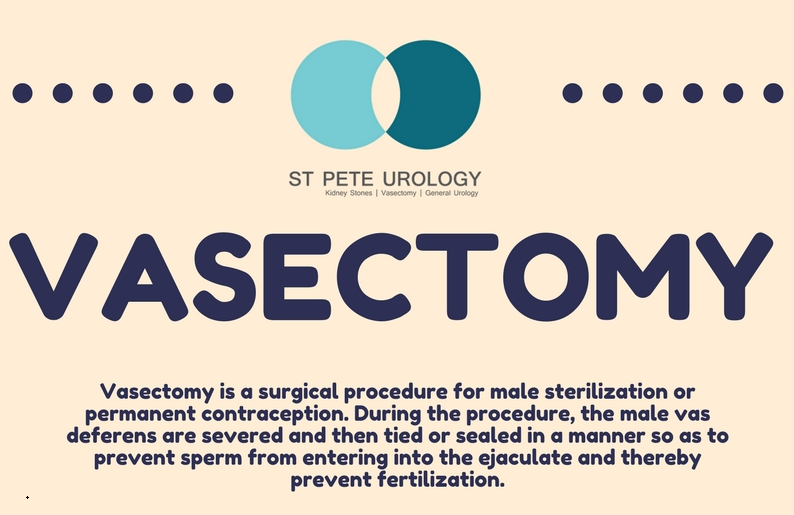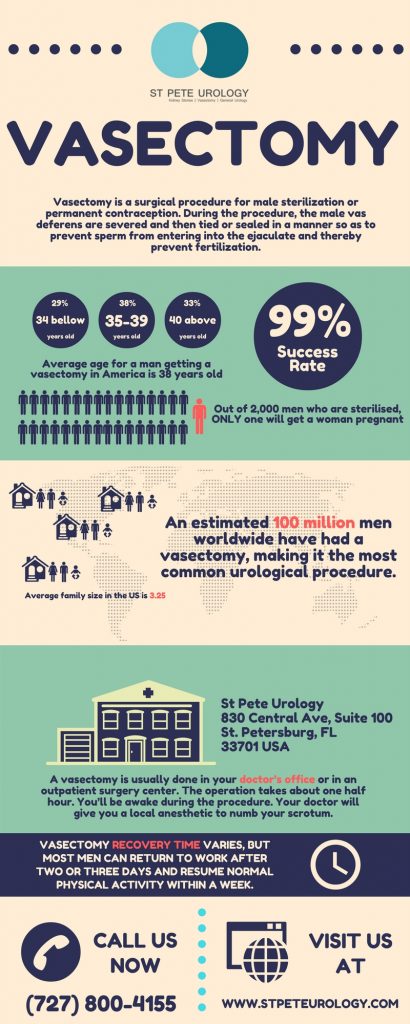Are you done having children or just feel sure you never want kids? If so, then you may consider having a permanent birth control (sterilization) procedure. For couples, sterilization can be performed on either a man or woman, with the procedure for men called a vasectomy while for women it is known as tubal ligation (getting your tubes tied). Sterilization is a common method of birth control, with more than 23 percent of all couples in the United States relying on it to stop having children.
What is tubal ligation? What is vasectomy?
Tubal ligation is a sterilization option for women. During the procedure, the fallopian tubes are sealed off or blocked to prevent ova (eggs) moving from the ovary via the fallopian tubes, preventing them from meeting with male sperm. A vasectomy is a sterilization option for men in which a man’s vas deferens tubes are blocked or tied and cauterized to prevent the transportation of sperm during ejaculation. While both vasectomy and tubal ligation are viable options, only one of the two procedures may be necessary when a couple chooses sterilization as a method of birth control. And often, vasectomy is the most preferred method of sterilization for couples because it is simpler, safer, cheaper, more reversible and more effective than tubal ligation.
Safety of vasectomy and tubal ligation
Both tubal ligation and vasectomy are extremely safe. However, tubal ligation involves hospitalization of women as the procedure is performed under general anesthesia. Tubal ligation is a more complex and lengthier procedure. On the other hand, a vasectomy, particularly the no-scalpel procedure, can be performed in as little as 10 minutes with the patient allowed to go home soon after operation. Vasectomy is less invasive and the doctor barely scores the scrotum skin. So when as a couple you are choosing between a vasectomy and tubal ligation, then the safety, convenience, minimal complications and short recovery time should make vasectomy the better option.
Risks of vasectomy and tubal ligation
Tubal ligation is typically a laparoscopic procedure that requires many hours or days of recovery. There also may be serious complications associated with general anesthesia, perforation of intestines or even infection. Tubal ligation also may cause long term side effects such as painful menstrual cycles and pelvic pain, though this occurs rarely. A vasectomy is a simple, minimally invasive outpatient procedure which takes less than one hour. It also does not have scientifically proven long-term risks or complications.
Efficacy of vasectomy and tubal ligation
Both vasectomy and tubal ligation are very effective. Studies examining the failure rates of vasectomy and tubal ligation have rated them among the most effective methods of birth control, with less than 1 in 100 chance of pregnancy after sterilization. However, because tubal ligation is more invasive and women have to stop using all forms of contraception after attaining a certain age, vasectomy is more appropriate.
Cost of vasectomy and tubal ligation
The costs associated with vasectomy and tubal ligation is quite different. A tubal ligation costs four times as much as a vasectomy. The average cost of a tubal ligation procedure is $2,000 or more while the average cost of a vasectomy procedure is $500, though the exact price varies from one surgeon to another. Nevertheless, if you have to pay for sterilization straight from your pocket, then a vasectomy may be more preferable as it is less expensive.
Reversibility of vasectomy and tubal ligation
Vasectomy and tubal ligation are considered permanent procedures. While a reversal of either is possible, the reversal procedures are quite expensive and without guarantee of success. While at least half of couples have reported successful pregnancy after a reversal of either type of sterilization, success rates depend on a number of factors, including the age, time since sterilization and type of surgery. So if you are not really sure that you do not want children, you should consider other birth control methods such as the implant (IUD) instead of sterilization.
Birth control is not the sole responsibility of women and their male partners should work with them to choose safer and more effective methods of birth control. A vasectomy has lower risks of complications, lower costs and more convenience than tubal ligation. However, before making a decision, it is important to speak with your doctor to obtain all the crucial information necessary for making an informed decision. At St Pete Urology, we help couples to make the right birth control decisions and to have access to safe and effective procedures. For more information, visit the “St Pete Urology” site.





 Vasectomy is a more reliable method of preventing pregnancy than any other method of birth control. For instance, in comparison to the female equivalent called
Vasectomy is a more reliable method of preventing pregnancy than any other method of birth control. For instance, in comparison to the female equivalent called  Remember, a vasectomy means you will not be able to father a child, at least not without the huge cost and complications of reversal surgery. Therefore, you must never undertake vasectomy lightly. Before you and your partner choose this method of birth control, you should both consider it carefully. Talk to your
Remember, a vasectomy means you will not be able to father a child, at least not without the huge cost and complications of reversal surgery. Therefore, you must never undertake vasectomy lightly. Before you and your partner choose this method of birth control, you should both consider it carefully. Talk to your 
